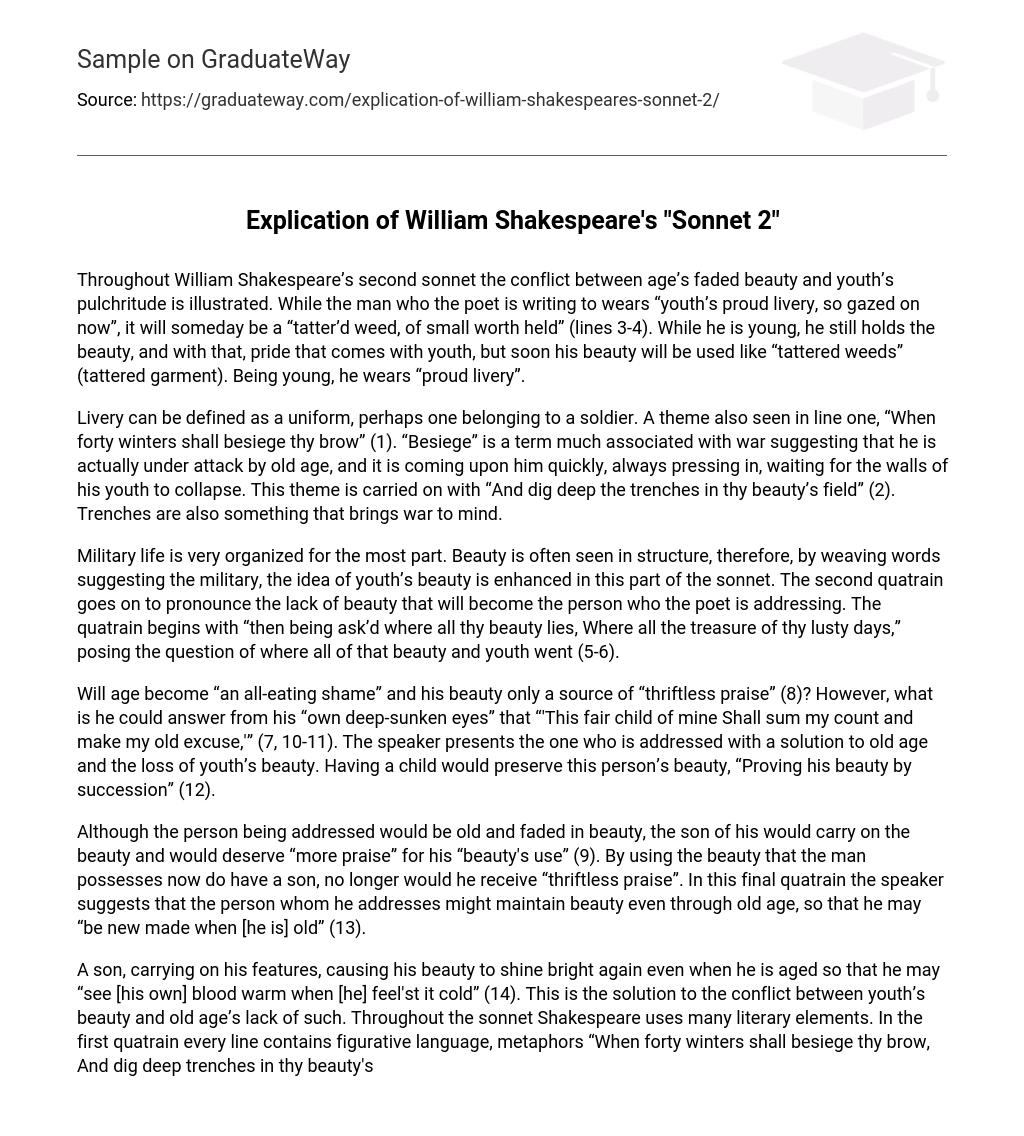Throughout William Shakespeare’s second sonnet the conflict between age’s faded beauty and youth’s pulchritude is illustrated. While the man who the poet is writing to wears “youth’s proud livery, so gazed on now”, it will someday be a “tatter’d weed, of small worth held” (lines 3-4). While he is young, he still holds the beauty, and with that, pride that comes with youth, but soon his beauty will be used like “tattered weeds” (tattered garment). Being young, he wears “proud livery”.
Livery can be defined as a uniform, perhaps one belonging to a soldier. A theme also seen in line one, “When forty winters shall besiege thy brow” (1). “Besiege” is a term much associated with war suggesting that he is actually under attack by old age, and it is coming upon him quickly, always pressing in, waiting for the walls of his youth to collapse. This theme is carried on with “And dig deep the trenches in thy beauty’s field” (2). Trenches are also something that brings war to mind.
Military life is very organized for the most part. Beauty is often seen in structure, therefore, by weaving words suggesting the military, the idea of youth’s beauty is enhanced in this part of the sonnet. The second quatrain goes on to pronounce the lack of beauty that will become the person who the poet is addressing. The quatrain begins with “then being ask’d where all thy beauty lies, Where all the treasure of thy lusty days,” posing the question of where all of that beauty and youth went (5-6).
Will age become “an all-eating shame” and his beauty only a source of “thriftless praise” (8)? However, what is he could answer from his “own deep-sunken eyes” that “’This fair child of mine Shall sum my count and make my old excuse,’” (7, 10-11). The speaker presents the one who is addressed with a solution to old age and the loss of youth’s beauty. Having a child would preserve this person’s beauty, “Proving his beauty by succession” (12).
Although the person being addressed would be old and faded in beauty, the son of his would carry on the beauty and would deserve “more praise” for his “beauty’s use” (9). By using the beauty that the man possesses now do have a son, no longer would he receive “thriftless praise”. In this final quatrain the speaker suggests that the person whom he addresses might maintain beauty even through old age, so that he may “be new made when [he is] old” (13).
A son, carrying on his features, causing his beauty to shine bright again even when he is aged so that he may “see [his own] blood warm when [he] feel’st it cold” (14). This is the solution to the conflict between youth’s beauty and old age’s lack of such. Throughout the sonnet Shakespeare uses many literary elements. In the first quatrain every line contains figurative language, metaphors “When forty winters shall besiege thy brow, And dig deep trenches in thy beauty’s field”, “proud livery”, and “tatter’d weed” (1-4).
These are all metaphors which compare the beauty of youth to old age. Also, a traditional Shakespearean sonnet rhyme scheme: ABAB CDCD EFEF GG. Consisting of three Quatrains and a couplet at the end. This structure, along with the iambic pentameter used in the poem, separates each quatrain from the other two in order to keep each thought separate. However, every idea is tied together with the couplet at the end by the use of a rhyme one after the other and solving the conflict between old age and youth’s attractiveness.





